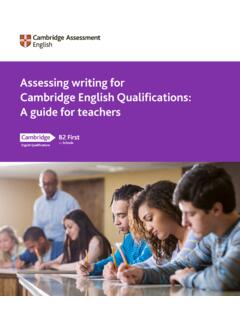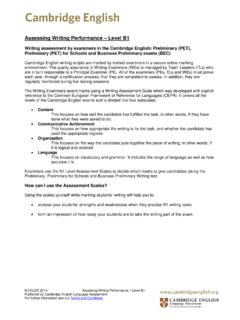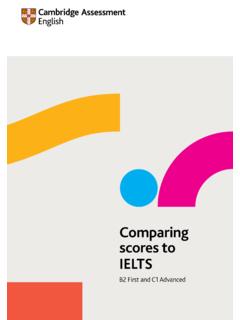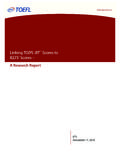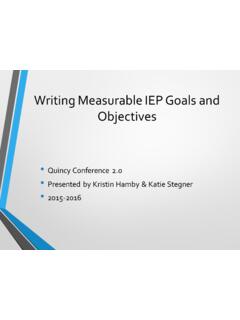Transcription of MCF REPRINT SERIES Writing a Successful Grant Proposal
1 Afunder sguidelines will tell you what to include in agrant Proposal for its organization. Most funderswant the same information, even if they use different words or ask questions in a different order. Some funders prefer that you fill out their own applicationforms or cover sheets. If the funder uses an application form,be sure to get a copy and follow the instructions. You may alsouse the Minnesota Common Grant Application Form if thefunder you are approaching accepts it. To download the formand view a list of funders that accept it, visit the Council sWeb site at (select Grantseeking in Minnesota ). Copies of the form are also available from TheFoundation Center Cooperating Collections in Brainerd(218/829-5574), Duluth (218/723-3802), Marshall (507/537-6176), Minneapolis (612/630-6300), Rochester (507/285-8002) and St. Paul (651/266-7000).The following outline should meet the needs of most fun-ders, or guide you when approaching a funder with no writtenguidelines.
2 The outline is for a project Proposal , and is mostappropriate for a project that is trying to correct a problem,such as water pollution, school truancy or ignorance abouthow HIV/AIDS is transmitted. (See Variations on the Stan-dard Outlineon page 4 for guidance on other types of pro-posals.) The Grant Proposal as a whole, not including supple-mentary materials, should usually be five pages or : Consider using subheads for each section, such as Organization Information, to help you, and your reader,keep track of what you re trying to the beginning of your Proposal , or on a cover sheet,write a two- or three-sentence summary of the Proposal . Thissummary helps the reader follow your argument in the pro-posal itself. For example: Annunciation Shelter requests $5,000 for a two-year,$50,000 job training program for homeless women in south-western Minnesota. Training will be offered at four rural shel-ters and will include basic clerical skills, interview techniquesand job seeker support groups.
3 Organization InformationIn two or three paragraphs, tell the funder about your orga-nization and why it can be trusted to use funds summarize your organization s history. State yourmission, whom you serve and your track record of achieve-ment. Clearly describe, or at least list, your programs. If yourprograms are many or complex, consider adding an organiza-tion chart or other attachments that explain them. Describeyour budget size, where you are located and who runs theorganization and does the work. Add other details that buildthe credibility of your group. If other groups in your regionwork on the same issues, explain how they are different andhow you collaborate with them, if you if you have received funds from this grantmakerbefore, your introduction should be complete. Funders some-times hire outside reviewers who may not be familiar withyour DescriptionThis is where you convince the funder that the issue youwant to tackle is important and show that your organization isan expert on the issue.
4 Here are some tips: Don t assume the funder knows much about your subjectarea. Most grantmaking staff people are generalists. Theywill probably know somethingabout topics like Shake-speare, water pollution and HIV/AIDS, but you should notassume that they are familiar with Troilus and Cressida,taconite disposal methods or Kaposi s sarcoma. If yourtopic is complex, you might add an informative article orsuggest some background reading. Why is this situation important? To whom did your organi-zation talk, or what research did you do, to learn about theissue and decide how to tackle it? Describe the situation in both factual andhuman interestterms, if possible. Providing good data demonstrates thatyour organization is expert in the field. If there are no gooddata on your issue, consider doing your own researchstudy, even if it is simple. Describe your issue in as local a context as possible. If youwant to educate people in your county about HIV/AIDS,tell the funder about the epidemic in your county not inthe United States as a whole.
5 Describe a problem that is about the same size as yoursolution. Don t draw a dark picture of nuclear war, teensuicide and lethal air pollution if you are planning a mod-est neighborhood arts program for children. Don t describe the problem as the absence of your project. We don t have enough beds in our battered women s shel-ter is not the problem. The problemis increased levels ofdomestic violence. More shelter beds is a Plan/Specific ActivitiesExplain what your organization plans to do about the prob-lem. What are your overall goals? You might say: The goals of this project are to increase the understand-ing among Minneapolis middle school students about theimpact of smoking on their health, and to reduce the numberof students who smoke. Writing a Successful Grant ProposalMCF REPRINT SERIESBy Barbara DavisThen go on to give details, including: Who is the target audience, and how will you involvethem in the activity? How many people do you intend toserve?
6 Some projects have two audiences: the direct par-ticipants(the musicians in the community band , the kidsdoing summer clean-up in the parks) and the indirect ben-eficiaries(the music lovers in the audience, the people whouse the parks). If so, describe both. How will you ensurethat people actually participate in the program? What are you going to do? Describe the activities. Tell thefunder about the project s output, or how many units ofservice you intend to deliver over a specific time period:how many hours of nutrition counseling to how many pregnant women; how many HIV/AIDS hot-line callsanswered by how many volunteers. Be sure you don tpromise an unrealistic level of service. What project planning has already taken place?If youhave already done research, secured the commitment ofparticipants or done other initial work, describe it so thefunder can see that you are well-prepared. Who is going to do the work and what are their cre-dentials?
7 (Attach r sum s of key people.) Some fundersask for the name of a project director: the person mostresponsible for the project, whether volunteer or that the staff or volunteers have the expertiseto do a good job. When will the project take place? Some funders ask forthe project start dateand project end general, aproject can be said to start when you start spending moneyon it. If the project is long, consider including a timeline. Where will the project take place?You may not know the answers to all these questions whenyou submit your Proposal . But the more you know, the betterthe Proposal will look. Apply the mind s eye test to yourdescription. After reading it, could the reader close his eyesand imagine what he would see if he came into the roomwhere your project is happening? Many project descriptionsare too : You can continue to submit updated informa-tion to foundation staff almost until the date the board actual-ly reviews the of Activities Tell the funder what impact your project will have whatwill change about the situation as a result of your project.
8 Forexample, your pregnancy nutrition counseling programintends to increase the birth weights of your clients impact of a project is sometimes hard to define. Whatis the intended impact of a performance of Beethoven s NinthSymphony,for example? Impact can be difficult to measure. The desired impact ofa smoking cessation program is clear, but the desired impactof a leadership program for teenagers may be ambiguous anddifficult to quantify. To add to the difficulty, few nonprofits can prove conclu-sively that a given impact was caused directly by their clients babies may weigh more, but the cause may notbe your nutrition program. Nevertheless, you must do the bestjob you can to define your intended Funding Here the funder wants to know if other organizations havecommitted funds to the project or been asked to do so. Fewfunders want to be the sole support of a project. (This may notbe true if the project cost is very small less than $5,000 forinstance or if a corporation is seeking public visibility bysponsoring the project.)
9 Funders generally expect you to askfor support from more than one source. In this section, youcan also describe the in-kind contributions (goods or servicesinstead of cash) that people are giving to the FundingIf you continue this project in the future, how will it besupported? Most funders don t want to support the same setof projects forever. Many funders see their niche as fundinginnovation: supporting new approaches to old problems orfinding solutions to new problems. What the funder really wants to see is that you have a long-term vision and funding plan for the project, that the projectis sustainable, especially if it is a new activity. If you don thave such a plan, start thinking about it if not for your fun-ders then for the success of your project or will you know whether you achieved the desiredimpacts? If you have done a good job of defining them (seeabove), all you need to do here is describe the information youwill gather to tell you how close you came.
10 Will you keeprecords of incoming hot-line calls? Will you call your coun-seling clients six months after they leave the program to askhow they are doing? Explain who will gather the evaluationinformation and how you will use it. Be sure your evaluationplan is achievable given your resources. If the evaluation willcost money, be sure to put that cost in the project much will the project cost? Attach a one- or two-pagebudget showing expected expenses and income for the pro-ject. Or you can use the budget format in the Minnesota Com-mon Grant Application the expense side into three sections: Personnel Expenses. Direct Project Expenses. Administrative or Overhead Expensesinclude the expenses for all the peo-ple who will work on the project. They may be employees ofyour organization or independent contractors. If they are2 employees, list the title, the annual pay rate and, if the personwill be working less than full-time or less than 12 months onthe project, the portion of time to be dedicated to the example, if an employee will work half-time on the pro-ject from October through May:Counseling director ($35,000 x 50% x 8 months) = $11,667 Also consider the time that may be contributed by otherstaff who are not directly involved.
